
Let’s be real, the first trimester is… intense. From the moment that little line appeared on the test, my body began a whirlwind of changes.…
The post Finding Comfort in Pregnancy: My Must Have Self-care Products appeared first on The Daily Struggle.
The story of Lady Wonder began in 1925, when her owner, Mrs. Claudia Fonda of Richmond, Va., noticed that the horse she had purchased when it was two weeks old—then just called Lady— would come when Fonda was merely thinking of calling her. Fonda wondered if the horse could read her mind, she told LIFE. By the time Lady was two years old the horse had been taught to spell out words by using blocks with letters on them. When Lady correctly predicted the winner of the Dempsey-Tunney boxing match, the fame of what Fonda billed as “The Mind-Reading Horse” began to spread.
Lady Wonder’s first appearance in LIFE came in 1940, when the magazine, as part of a larger story on ESP, related the history of the horse but also reported that it had lost its extra-sensory special powers. The horse could still perform simple mathematics, though, and was at that point merely being billed as “The Educated Horse,” with claims of clairvoyance left by the wayside. Still, the story noted that its ESP expert believed the horse once posessed special powers.
Then in 1952 Lady Wonder returned to the spotlight when she seemingly offered insight to a tragic case involving a missing boy. Here’s how LIFE described her contribution in its issue of Dec. 22, 1952:
A friend of the district attorney of Norfolk County, Mass., went to see her, on a hunch, to ask her for news of a little boy who had been missing for months. She answered, “Pittsford Water Wheel.” A police captain figured out that this was a psychic misprint for “Field and Wilde Water Pit,” an abandoned quarry. Sure enough, that is where the boy’s body was found.
The incident brought national attention to Lady Wonder, and among those who made the pilgrimage to her Virginia farm was LIFE photographer Hank Walker. He captured the mare, then 27 years old, in action, dispensing advice and sports predictions. (For the specific college football picks from Lady Wonder mentioned in the article, the horse was right on only one out of three picks).
Not everyone was buying the act. In 1956 the magician Milbourne Christopher, who was a noted debunker of frauds, visited Lady Wonder’s stable and concluded that the horse was spelling out words under the subtle guidance of Fonda, who was directing Lady Wonder on which blocks to select.
Lady Wonder died the next year.
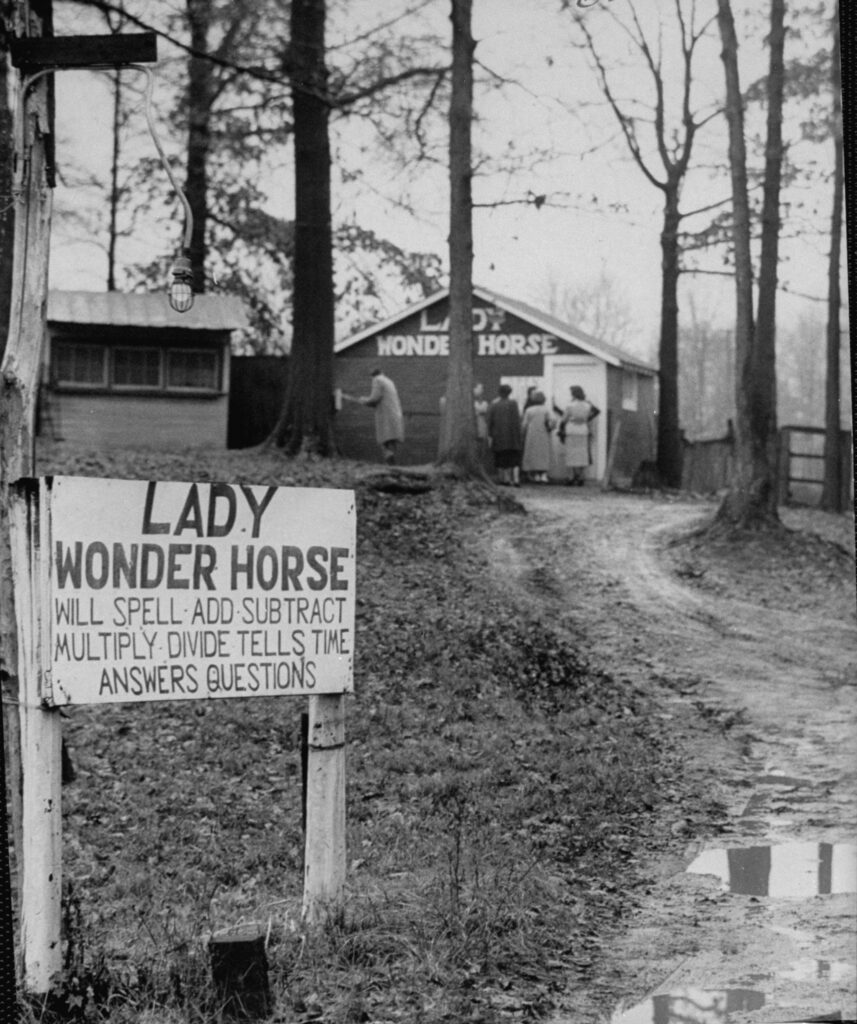
The 27-year-old Lady Wonder, a horse with purported clairvoyant abilities who communicated answers by flipping letters on a rack, was a popular tourist attraction in Richmond, Va,. 1952.
Hank Walker/Life Picture Collection/Shutterstock
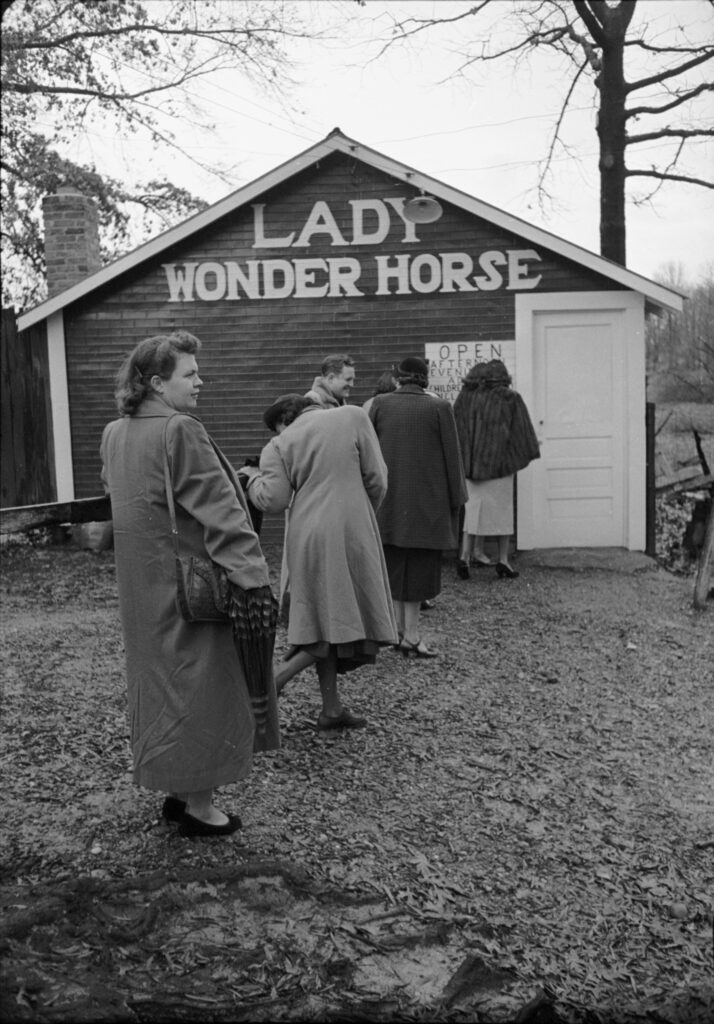
The 27-year-old Lady Wonder, a horse with purported clairvoyant abilities who communicated answers by flipping letters on a rack, was a popular tourist attraction in Richmond, Va,. 1952.
Hank Walker/Life Picture Collection/Shutterstock

The 27-year-old Lady Wonder, a horse with purported clairvoyant abilities who communicated answers by flipping letters on a rack, was a popular tourist attraction in Richmond, Va,. 1952.
Hank Walker/Life Picture Collection/Shutterstock
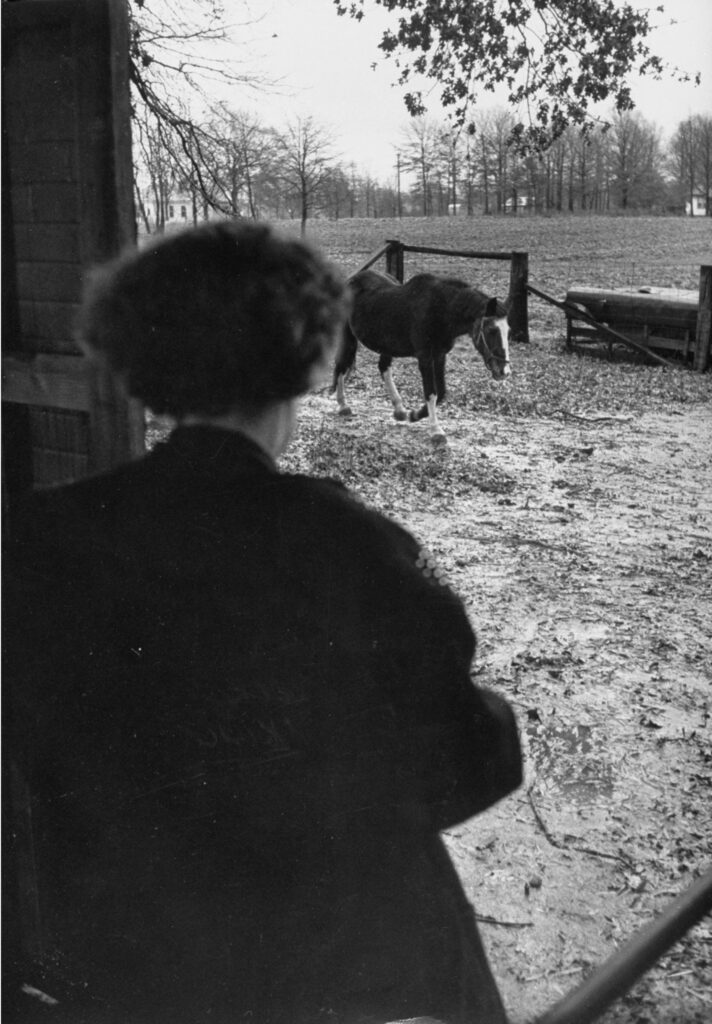
“Lady Wonder,” a horse with the purported ability to see the future, came in from the pasture to answer questions for her customers, Richmond, Va., 1952.
Hank Walker/Life Picture Collection/Shutterstock
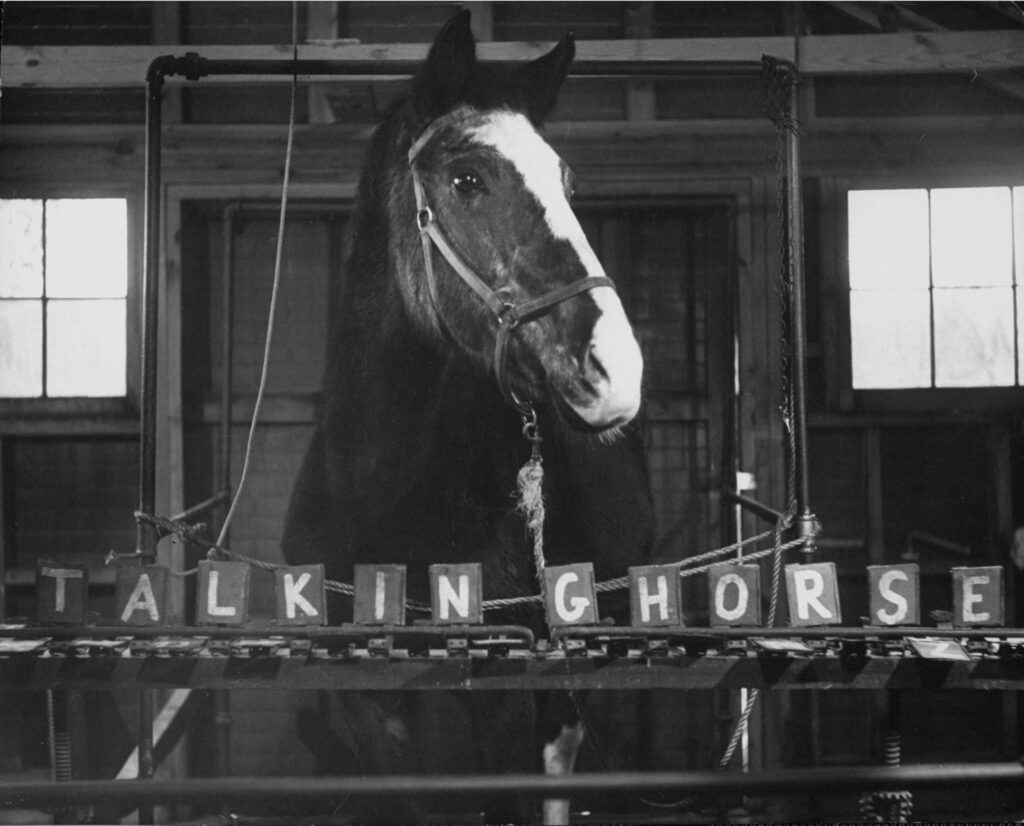
The 27-year-old Lady Wonder, a horse with purported clairvoyant abilities who communicated answers by flipping letters on a rack, was a popular tourist attraction in Richmond, Va,. 1952.
Hank Walker/Life Picture Collection/Shutterstock
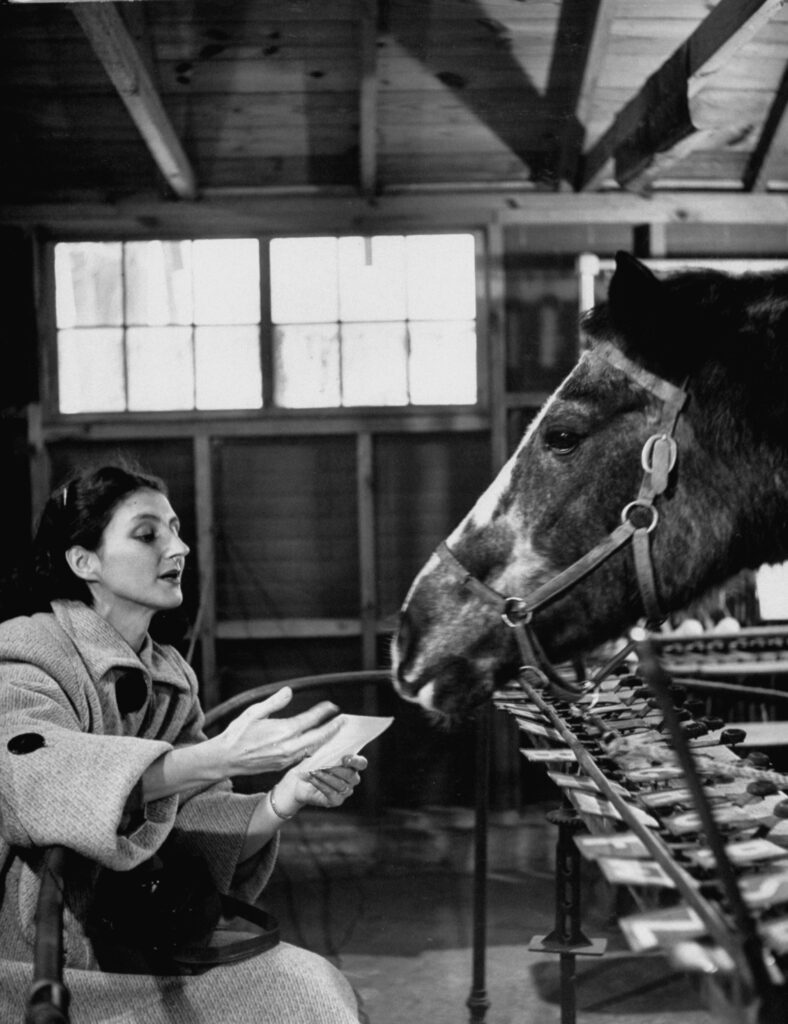
Mrs. Julius Bokkon regularly visited Lady Wonder to solicit the opinion of the clairvoyant horse on matters in her life, Richmond, Va., 1952.
Hank Walker/Life Picture Collection/Shutterstock
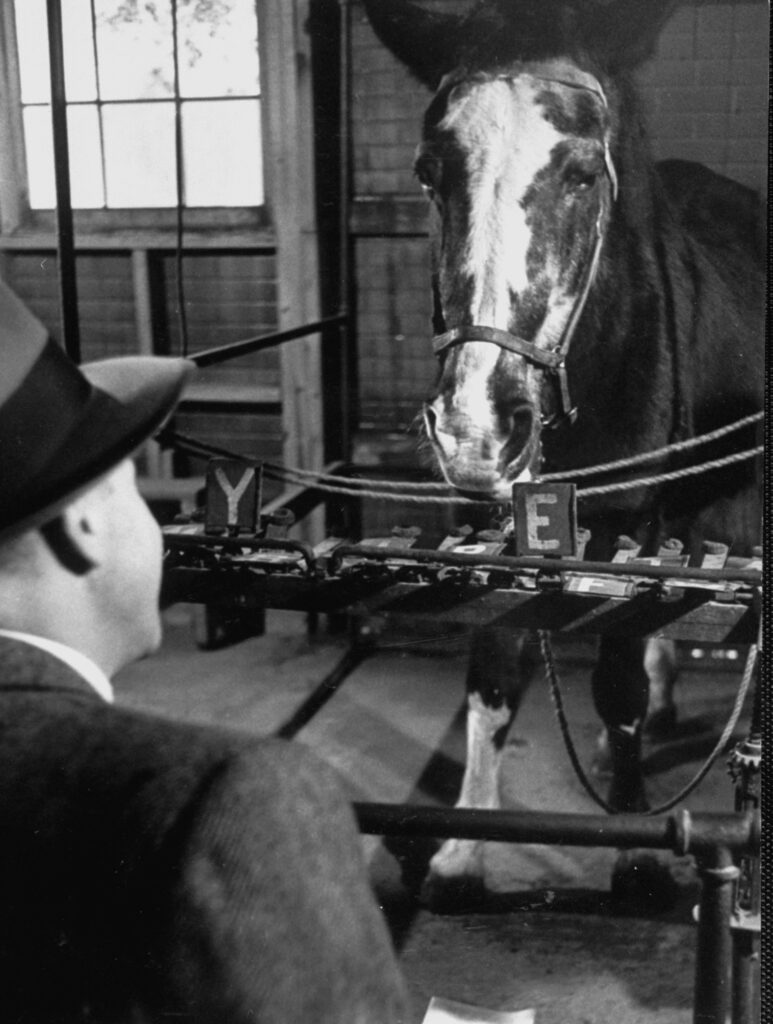
Lady Wonder, the purported clairvoyant horse, gave a Massachusetts businessman direction on where to get a loan, spelling out “Heancock,” which was interpreted to mean the insurance company John Hancock, 1952.
Hank Walker/LIfe PIcture Collection/Shutterstock
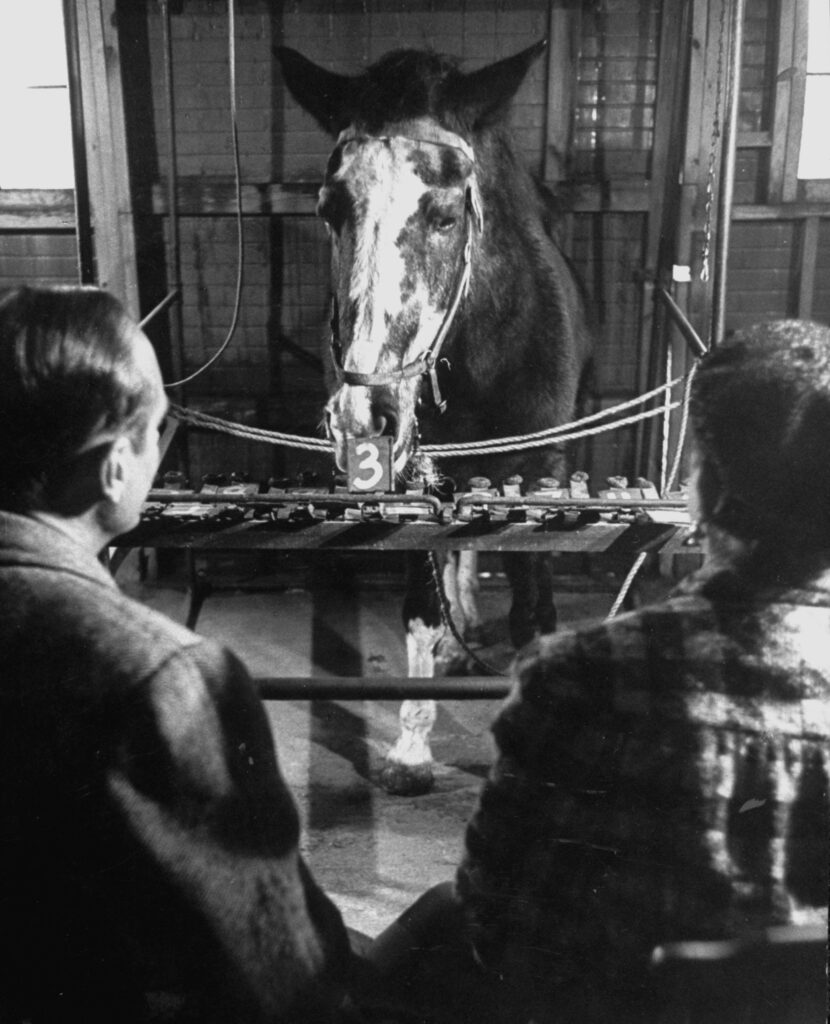
The tricks of Lady Wonder included performing addition; here she had been asked what 7+6 equalled (she had already pulled up a “1” that is out of view to the left), Richmond, Va., 1952.
Hank Walker/Life Picture Collection/Shutterstock
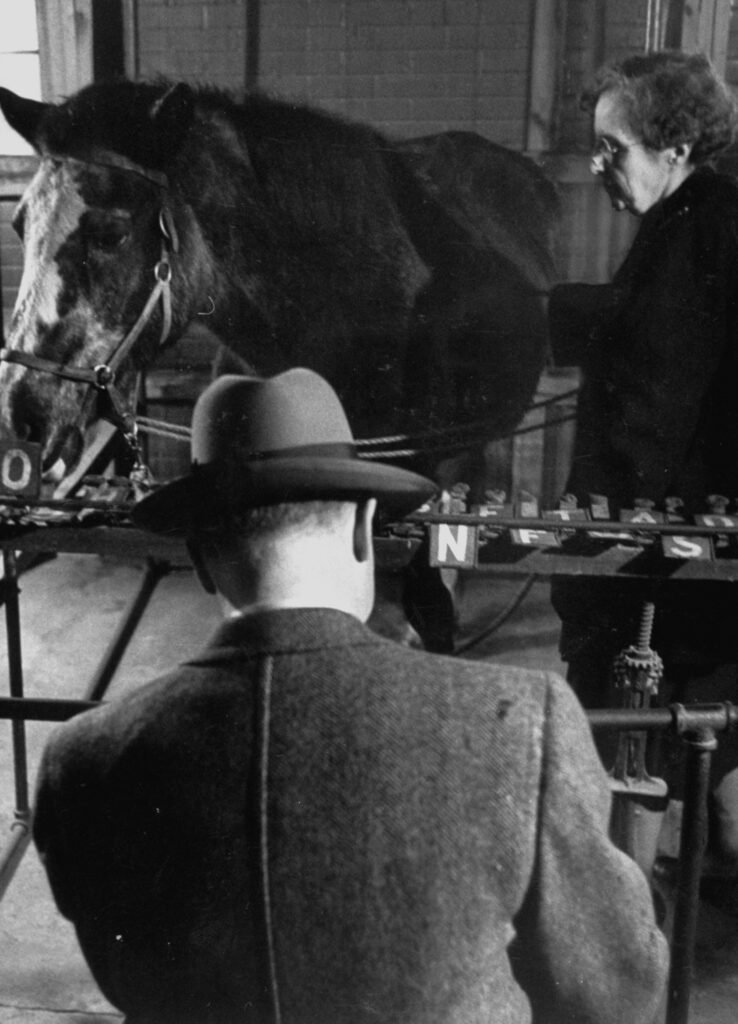
Owner Claudia Fonda stood by as her clairvoyant talking horse tourist attraction, Lady Wonder, gave a Massachusetts businessman direction on where to get a loan, spelling out “Heancock,” which was interpreted to mean the insurance company John Hancock, 1952.
Hank Walker/Life Picture Collection/Shutterstock
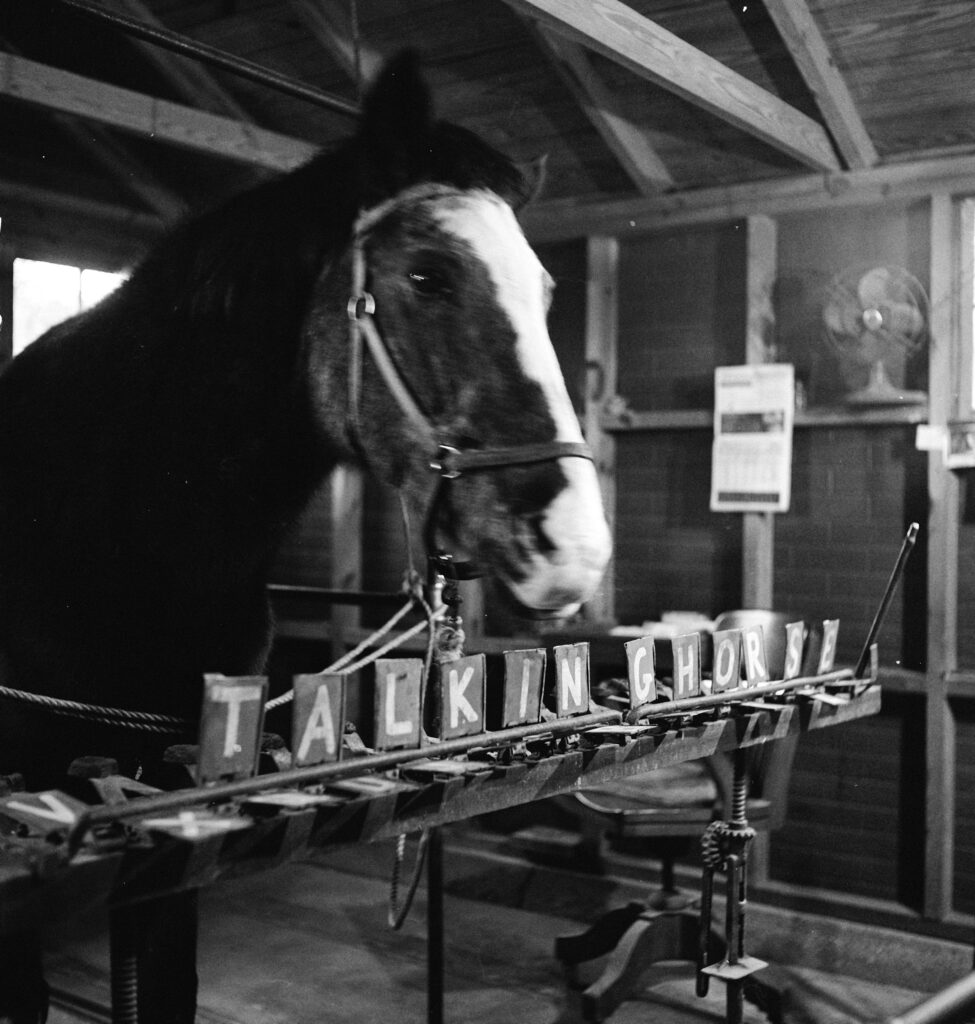
The 27-year-old Lady Wonder, a horse with purported clairvoyant abilities who communicated answers by flipping letters on a rack, was a popular tourist attraction in Richmond, Va,. 1952.
Hank Walker/LIfe PIcture Collection/Shutterstock
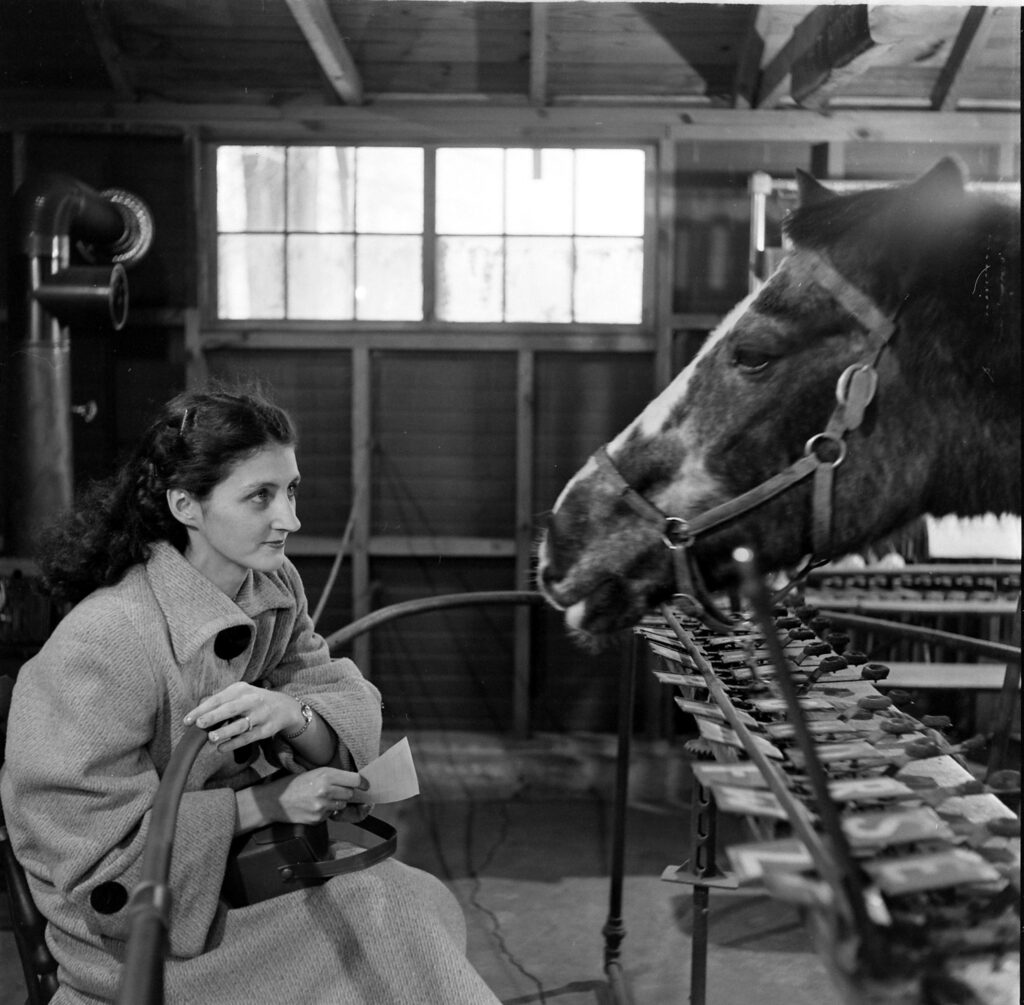
Lady Wonder, a horse with supposed clairvoyant powers, attracted visits from tourists and well as regulars such as Mrs. Julius Bokkon, Richmond, Va., 1952. The levers around the horse were like keys in a giant typewriter that it used to communicate its messages.
Hank Walker/Life Picture Collection/Shutterstock
The post Meet Lady Wonder, the Psychic Horse Who Appeared Twice in LIFE appeared first on LIFE.

Nothing beats that feeling of getting the keys to your new home and inviting your friends and loved ones over to celebrate with you! To…
The post Housewarming Gift Ideas for every budget appeared first on The Daily Struggle.
Hippos are the third largest mammal on the planet, behind only the elephant and the white rhino. But there is a variety of hippo known as the pygmy hippo that is tiny by comparison, especially when it is very young. And that makes the animal a natural curiosity. Witness the popularity of Moo Deng, a pygmy hippo who lives in a Thailand zoo and became a viral sensation in 2024.
The editors of LIFE shared the fascination.
The magazine’s June 2, 1941 issue included a story headlined “World’s Smallest Hippopotamus Arrives in U.S. From Liberia.” The pygmy hippo in question had been abandoned by its mother, found by Liberian natives and turned over to a man named Silas E. Johnson, who worked in Liberia and was an amateur zoologist.
Johnson then sailed to New York City for his “biannual three-month vacation in the U.S,” according to LIFE, and brought the baby hippo with him. When the hippo arrived in America, he was two months old, weighed nine pounds, was 18 inches long, and had acquired the name Skipper during the course of his sea journey. Legendary LIFE staff photographer Alfred Eisenstaedt was there to capture the magic.
LIFE explained exactly what made Skipper so precious:
The rarity of Mr. Johnson’s pet lies in the fact that pygmy hippopotamuses, found only in Liberia, are stalwart fighters which fiercely protect their young….When he is full-grown, Skipper will weight about 400 pounds. Normal hippos weight 30 pounds at birth, three tons at maturity.
While Skipper was rare, he was not entirely unique. In 1952 LIFE featured another pygmy hippo that had come to the U.S. This little fellow was named Gumdrop, and he and his zookeeper were photographed for the magazine by George Skadding. Unlike Skipper, Gumdrop came to the U.S. in the company of his mother.
How rare is a pygmy hippopotamus? Outside of zoos, the animal’s primary habitat remains in Libera and other neighboring West African countries. According to an estimate in 2015, only about 2,500 pygmy hippos remain alive in the wild.
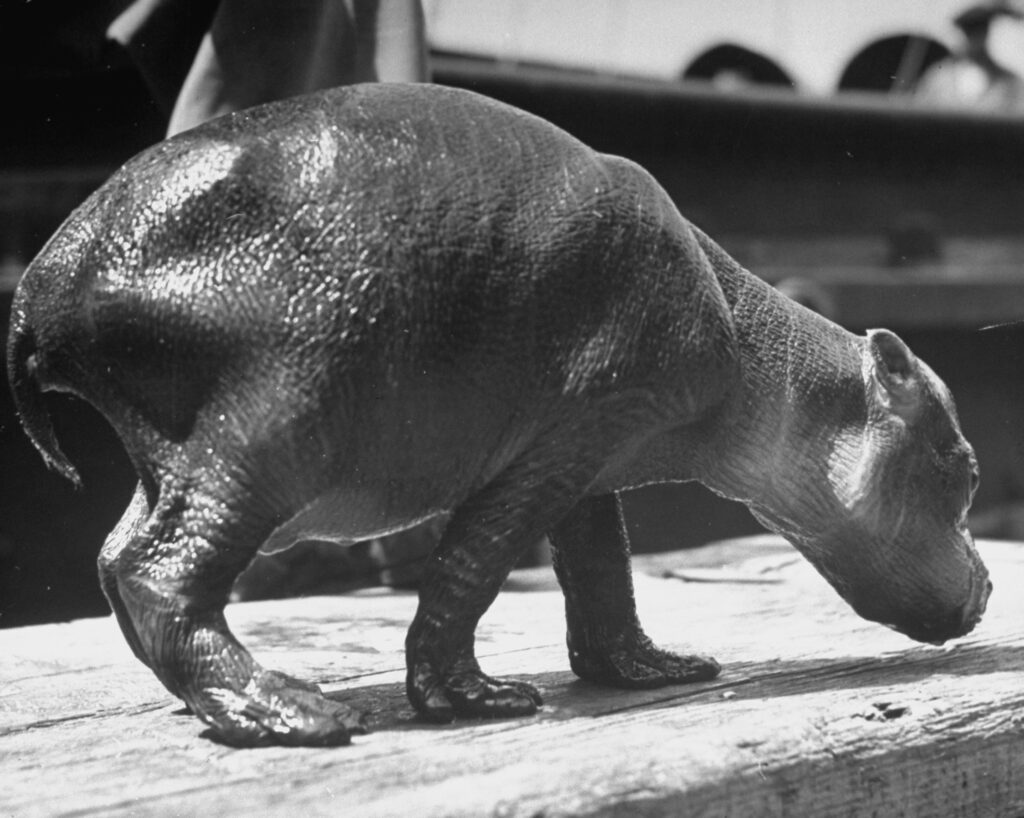
This rare baby pygmy hippopotamus, named Skipper, was abandoned by his mother in Liberia and brought to the U.S. by boat in 1941 in the company of an amateur zoologist.
Alfred Eisenstaedt/Life Picture Collection/Shutterstock
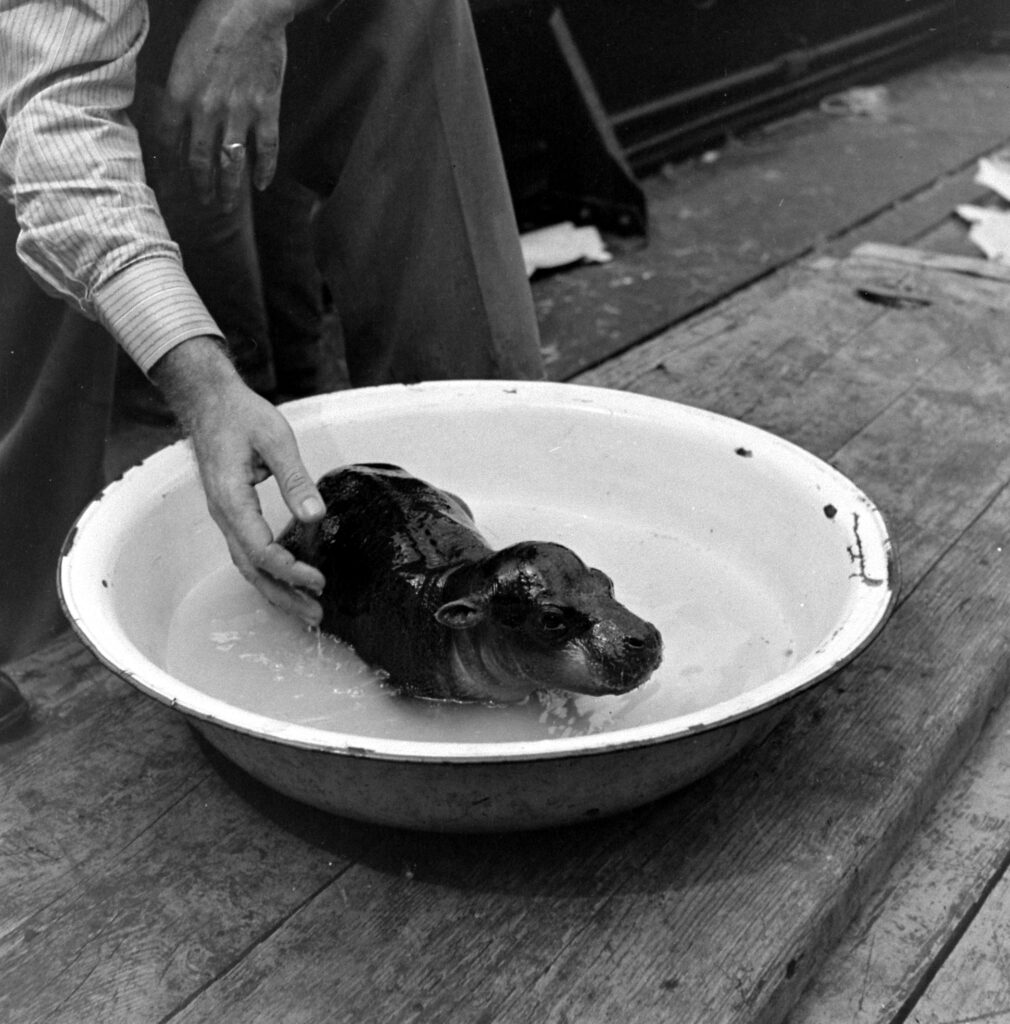
This rare baby pygmy hippopotamus, named Skipper, was abandoned by his mother in Liberia and brought to the U.S. by boat in 1941 in the company of an amateur zoologist. Skipper needed to be kept wet to prevent his skin from peeling.
Alfred Eisenstaedt/Life Picture Collection/Shutterstock
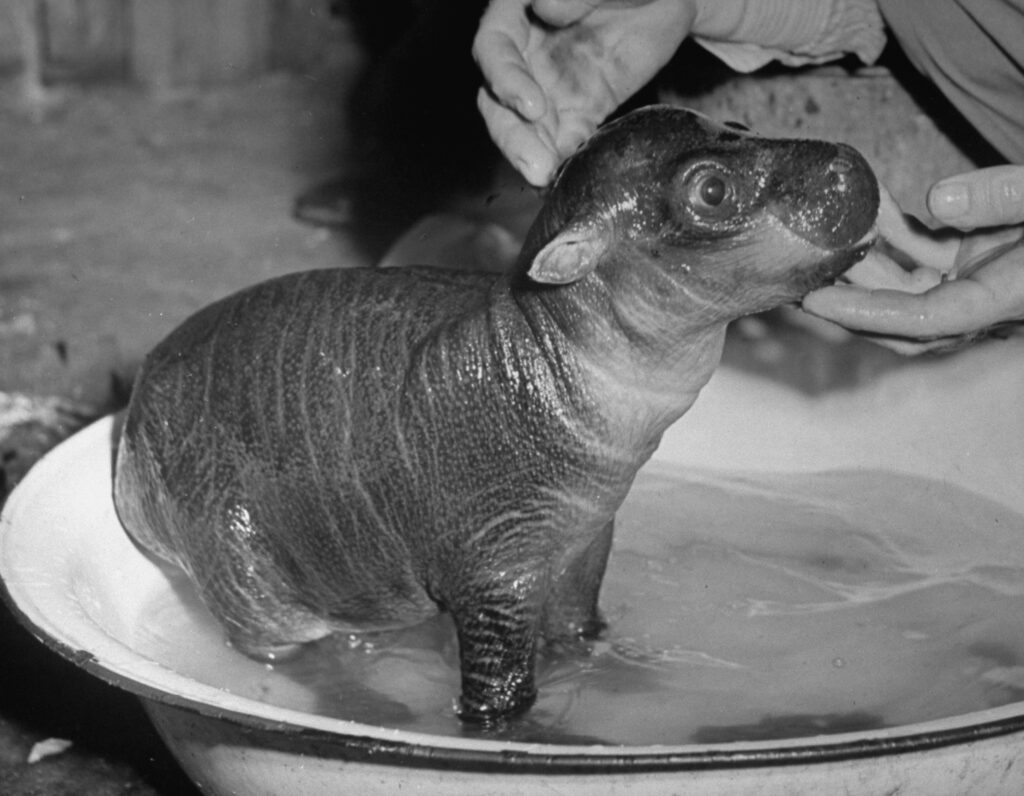
This rare baby pygmy hippopotamus, named Skipper, was abandoned by his mother in Liberia and brought to the U.S. by boat in 1941 in the company of an amateur zoologist.
Alfred Eisenstaedt/Life Picture Collection/Shutterstock
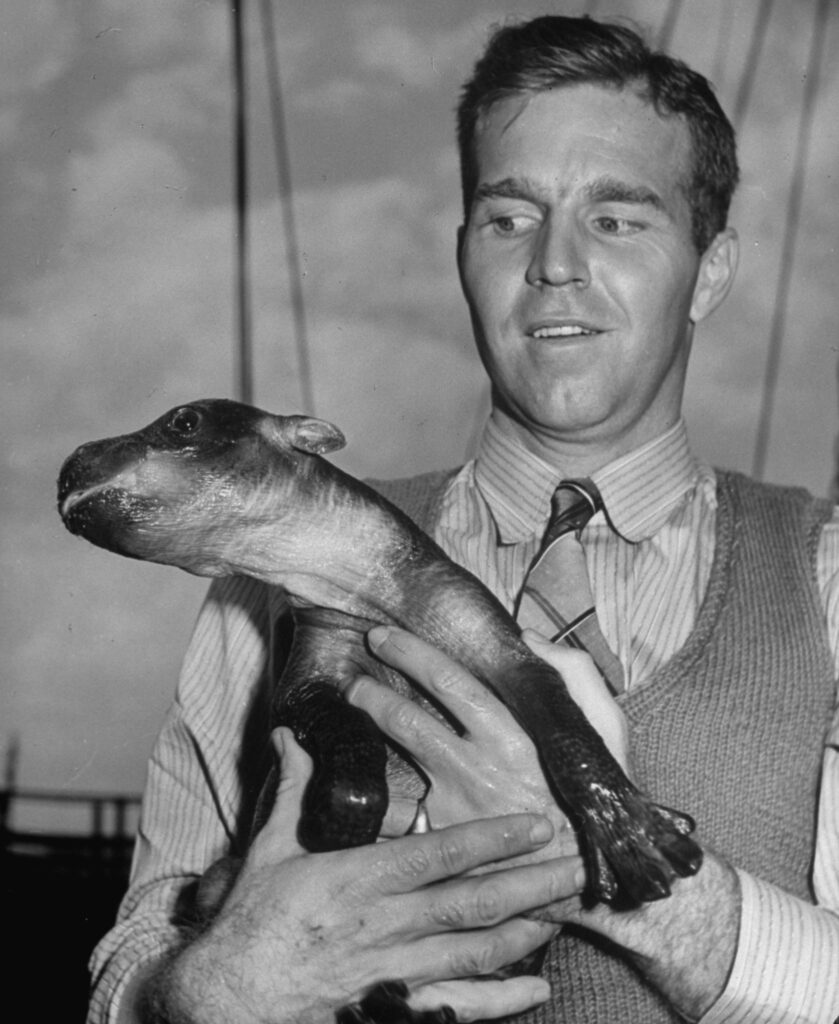
Amateur zoologist Silas E. Johnson brought this baby pygmy hippopotamus abandoned by his mother from Liberia to the U.S.; during the boatride from Africa to New York, the hippo acquired the nickname Skipper.
Alfred Eisenstaedt/Life Picture Collection/Shutterstock
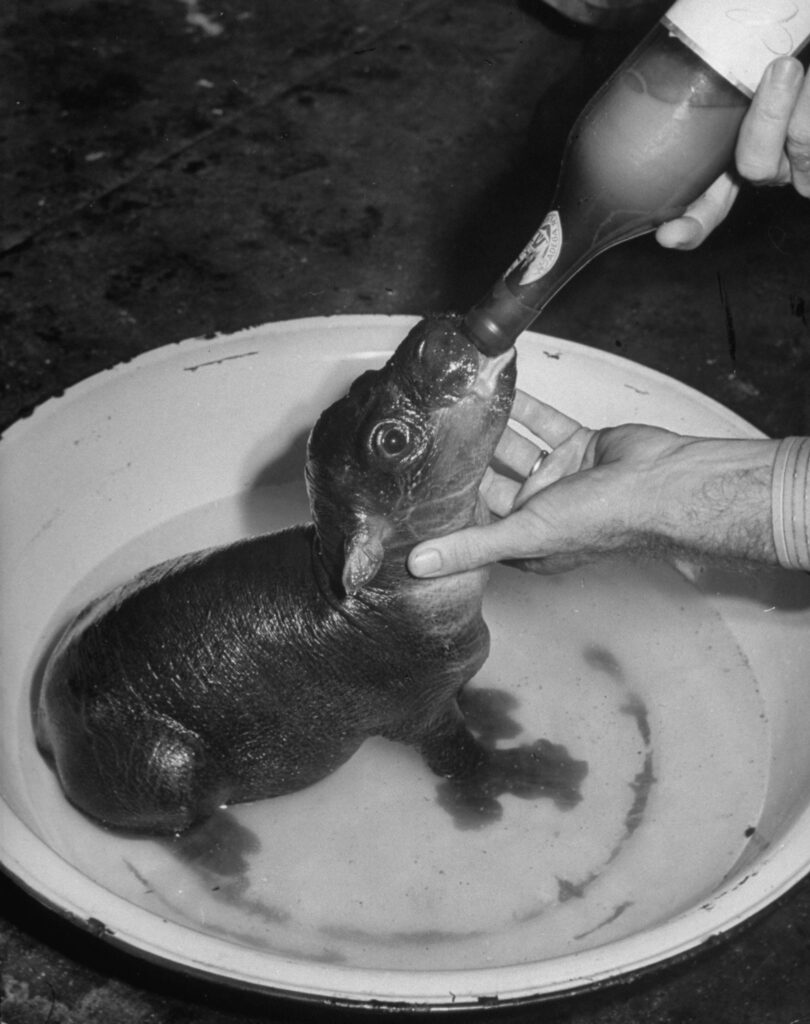
This baby pygmy hippopotamus, abandoned by his mother in LIberia and brought to the U.S. by an amateur zoologist, consumed a half-pint of condensed milk and pablum from a bottle four times a day, 1941.
Alfred Eisenstaedt/Life Picture Collection/Shutterstock
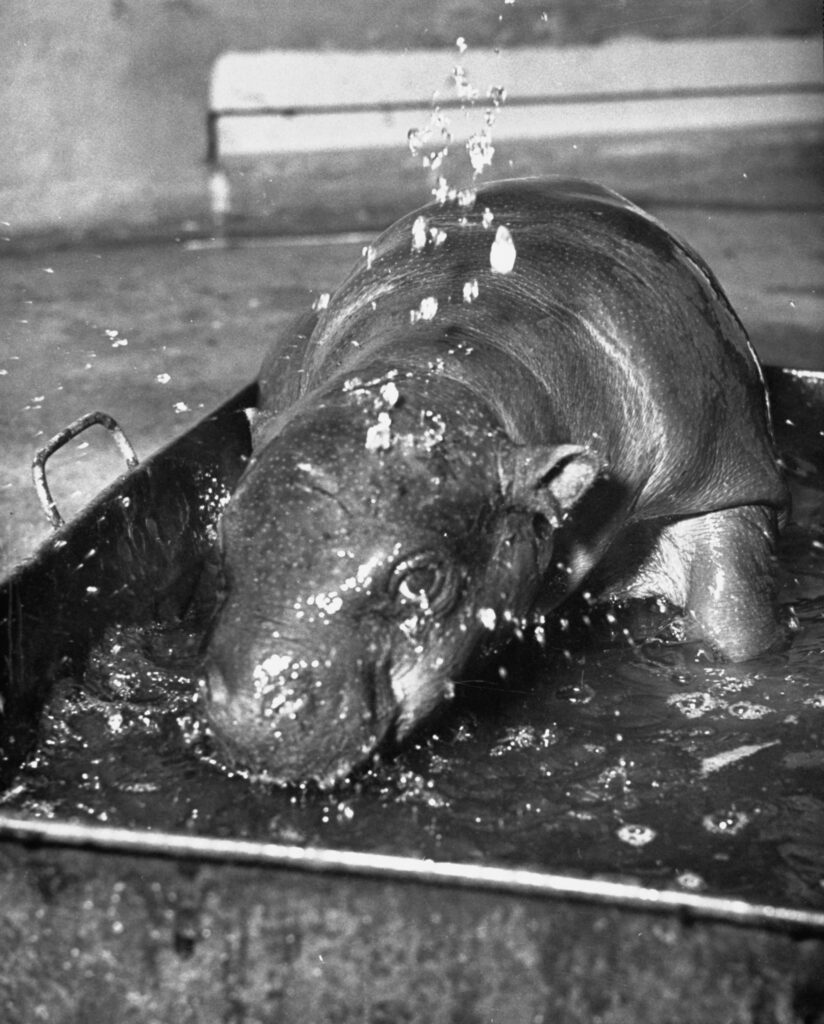
A baby pygmy hippo named Gumdrop received a bath, 1952.
George Skadding/Life Picture Collection/Shutterstock
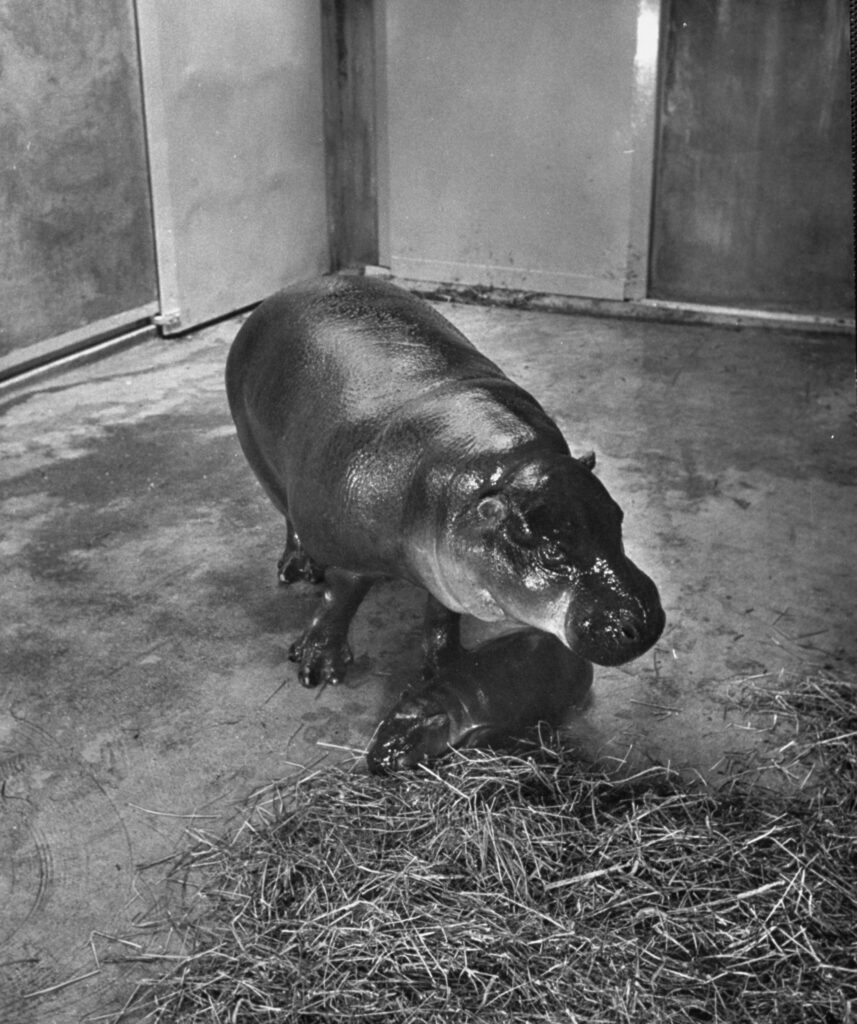
A baby pygmy hippo named Gumdrop and his mother, 1952.
George Skadding/Life Picture Collection/Shutterstock
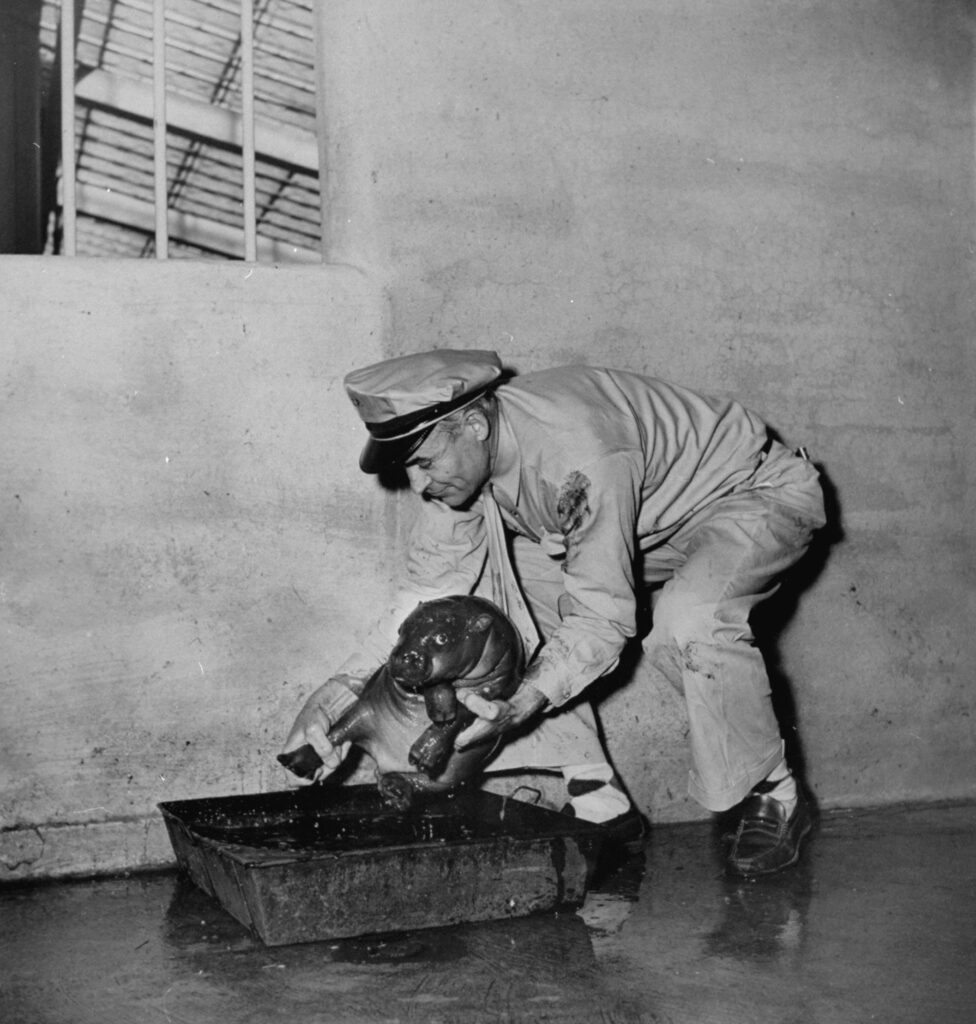
A zookeeper administered a bath to Gumdrop, a baby pygmy hippo, 1952.
George Skadding/Life Picture Collection/Shutterstock
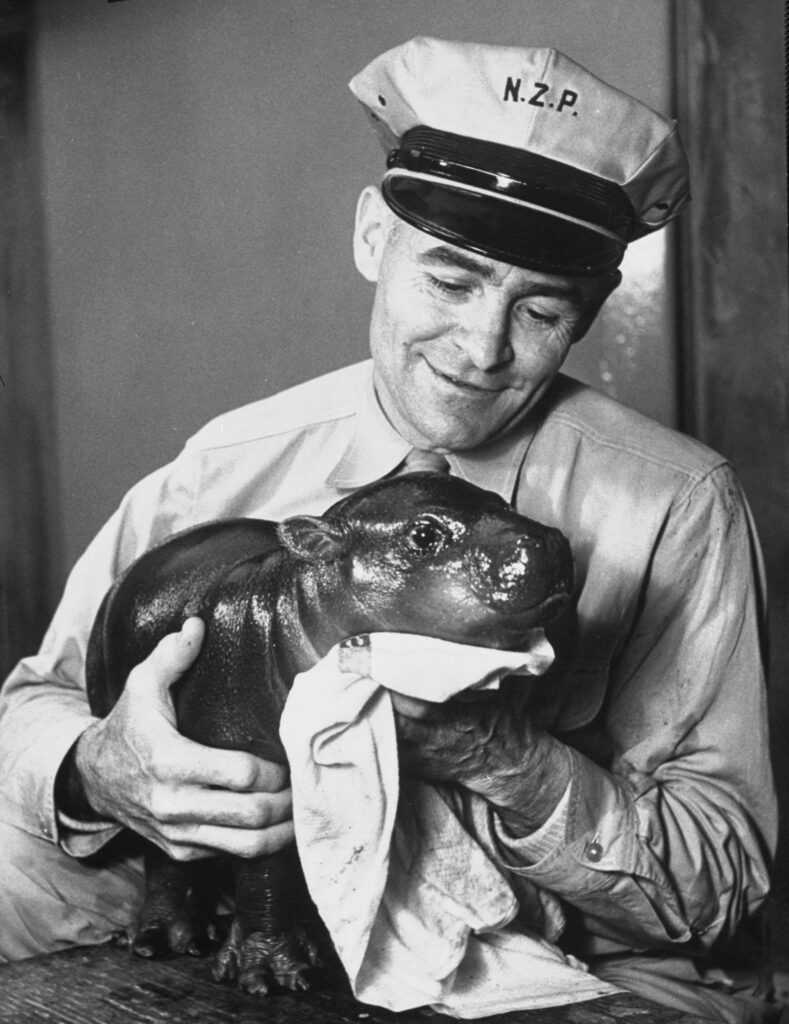
Gumdrop, a baby pygmy hippo, was toweled off by a zookeeper following his bath, 1952.
George Skadding/Life Picture Collection/Shutterstock
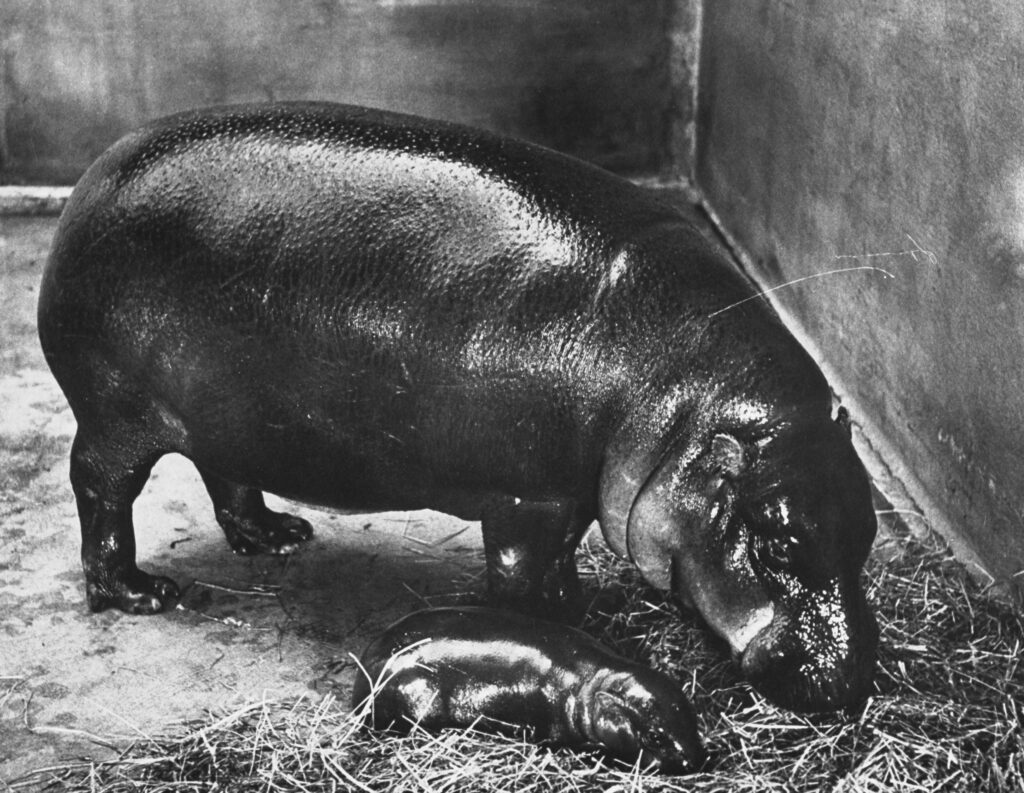
Gumdrop, a baby pygmy hippo, fed with his mother, 1952.
George Skadding/Life Picture Collection/Shutterstock
The post Before Moo Deng: Little Hippos in LIFE appeared first on LIFE.

Whether it’s with your colleagues at work, your mates or family, Secret Santa can sometimes be a tricky game to navigate. Do you get them…
The post Secret Santa gifts under £25 appeared first on The Daily Struggle.
Early in his first term as president, Lyndon B. Johnson found himself caught up in a scandal involving his family’s beagles, named Her and Him. The trouble started when the President was welcoming a group of business leaders at the Rose Garden, and he lifted one of the family pets by its ears, causing the dog to cry out. Johnson then commented, “It does them good to let them yelp.”
The ear-pulling was captured by an Associated Press photographer, and plenty of dog lovers became upset at the President. At this link you can see the photo, as well as audio of Johnson talking about how a senator brought up the ear-pulling during negotiations with Congress over the Civil Rights Act of 1964.
After that incident Johnson’s beagles soon appeared on the cover of LIFE’s June 19, 1964 issue. The story aimed to show that, despite the ear-pulling incident, Her and Him were enjoying life under the Johnson Administration. “Not many dogs have been privileged to shoo birds off the White House lawn, get underfoot at a cabinet meeting or mingle with dignitaries at a State Ball,” LIFE wrote. “Certainly no dogs in all the world have the Bouquet Room as their private boudoir.”
LIFE staff photographer Francis Miller was given great access to Him and Her, and he came to the White House prepared to make the most of it. An animal lover himself, Miller brought a full assortment of treats and amusements to get the beagles on his side. Here’s how LIFE described the shoot:
Too wise in the ways of puppies to believe that affection alone would produce good photographs, Miller stretched himself out on the White House lawn, alternately barked like a dog, tossed a bone in the air, plied the beagles with his Yummies, huffed into the harmonica and joggled the toy bird in his left hand. This left him free to shoot the cover with his right hand and his right eye.
The story stated that Him and Her were primarily the pets of LBJ’s daughter Luci, who was 16 years old at the time. And she was not the beagles’ only caretaker. Miller took several photos of the dogs in the company of Thraphes Bryant, who in addition to being the White House electrician helped look after the dogs.
The affection between Bryant and the beagles was clear in Miller’s photos. And Bryant tended to many First Dogs during his career. He would write a memoir about it, titled “Dog Days at the White House: The Outrageous Memoirs of the Presidential Kennel Keeper.”
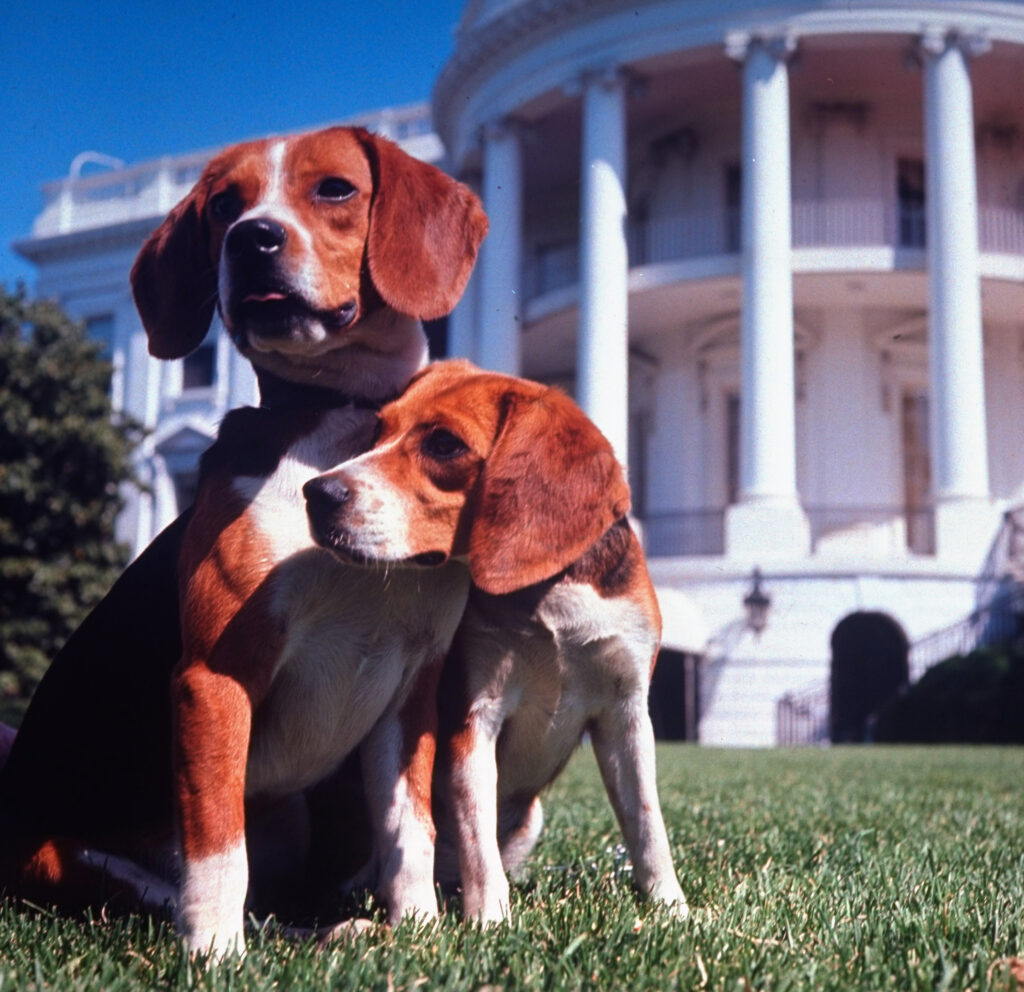
President Lyndon B. Johnson’s pet beagles, Him and Her, on the White House lawn, 1964.
Francis Miller/Life Picture Collection/Shutterstock
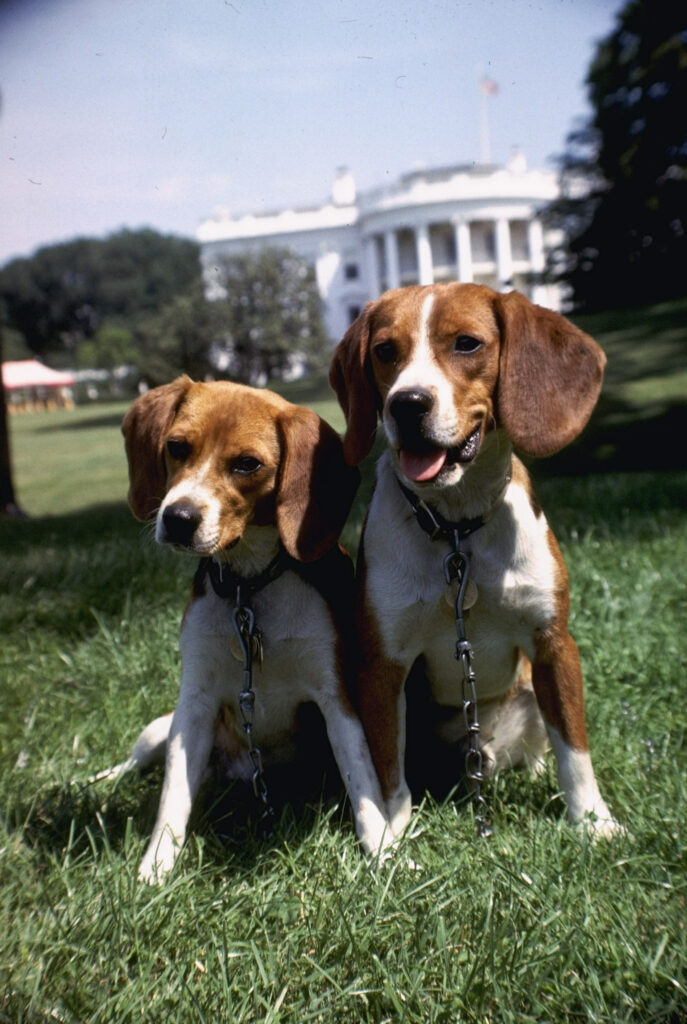
Him and Her, pet Beagles of President Lyndon B. Johnson, sitting together on lawn of White House, 1964.
Francis Miller/Life Picture Collection/Shutterstock
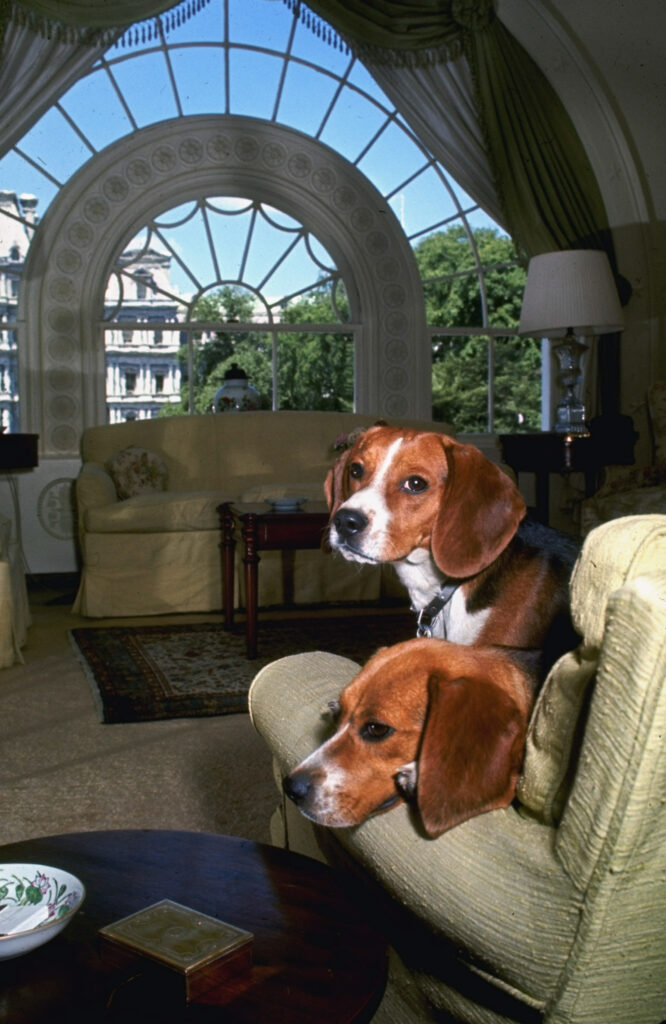
Him and Her, pet Beagles of President Lyndon B. Johnson, in a White House sitting room, 1964.
Francis Miller/Life Picture Collection/Shutterstock
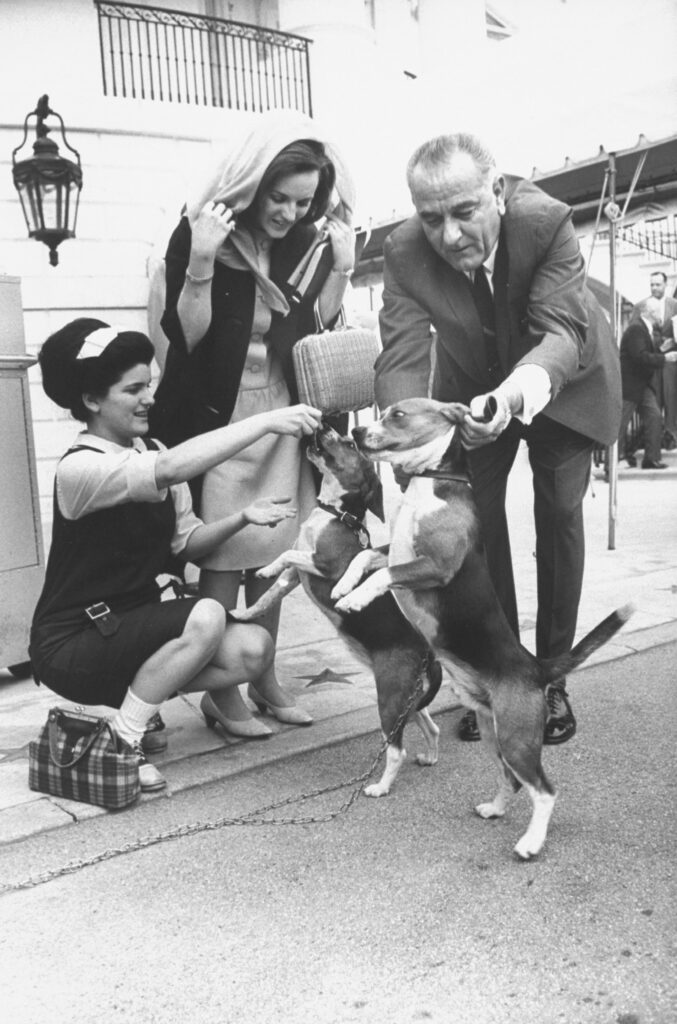
President Lyndon B. Johnson, along with his daughter Luci Baines Johnson (left) and her friend Warri Lynn Smith (center), played with the family beagles, 1964.
Francis Miller/Life Picture Collection/Shutterstock
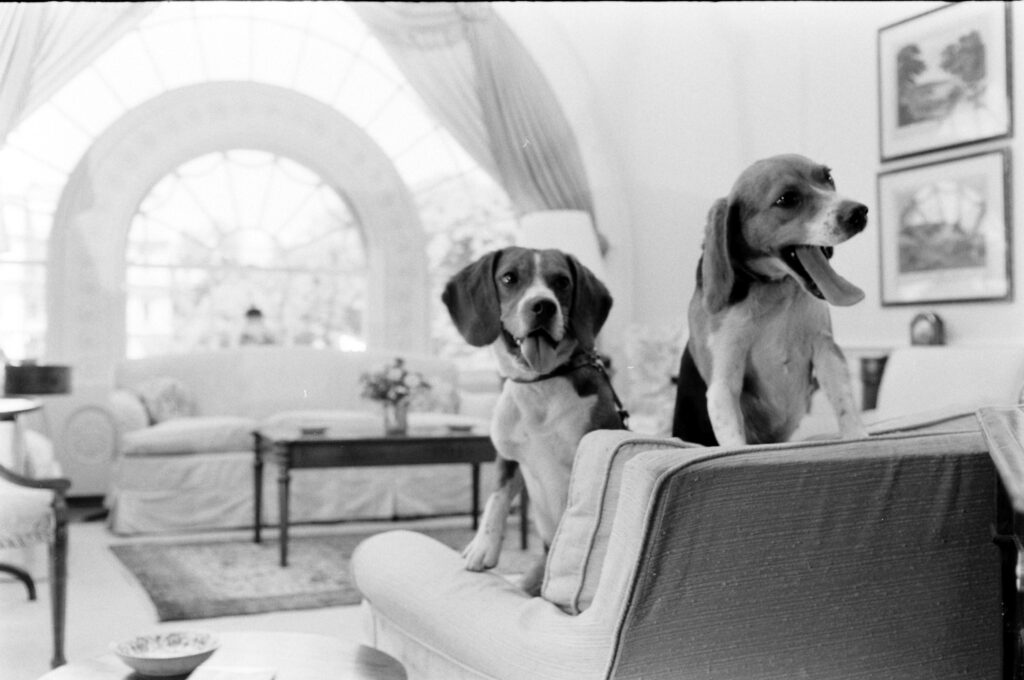
President Lyndon B Johnson’s beagles at the White House, 1964.
Francis Miller/Life Picture Collection/Shutterstock
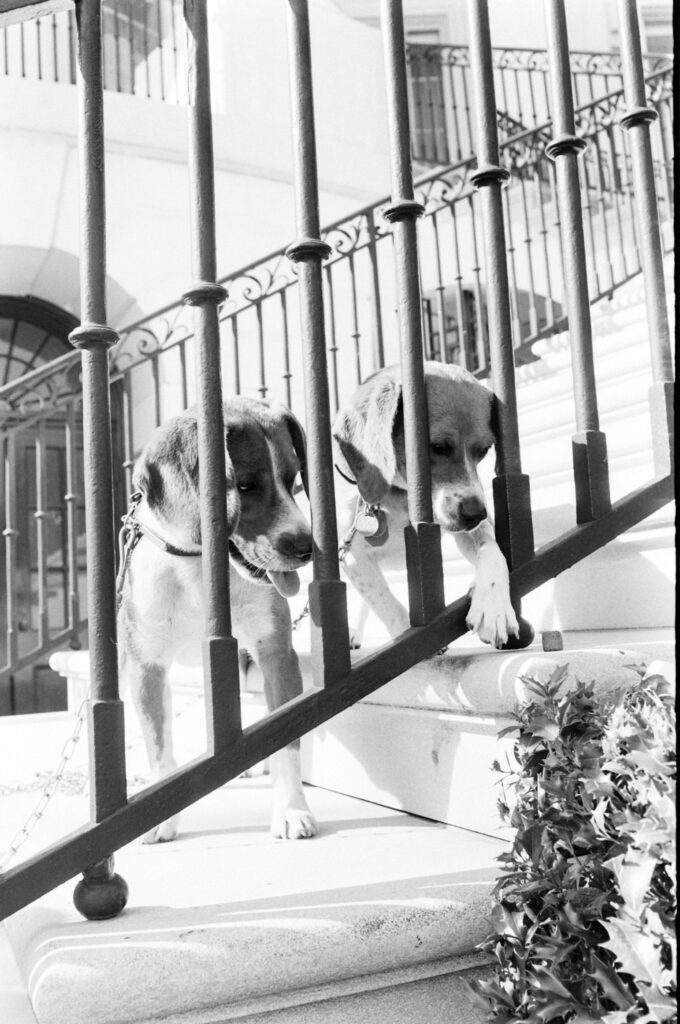
Lyndon Johnson’s beagles, Him and Her, at the White House, 1964.
Francis Miller/Life Picture Collection/Shutterstock
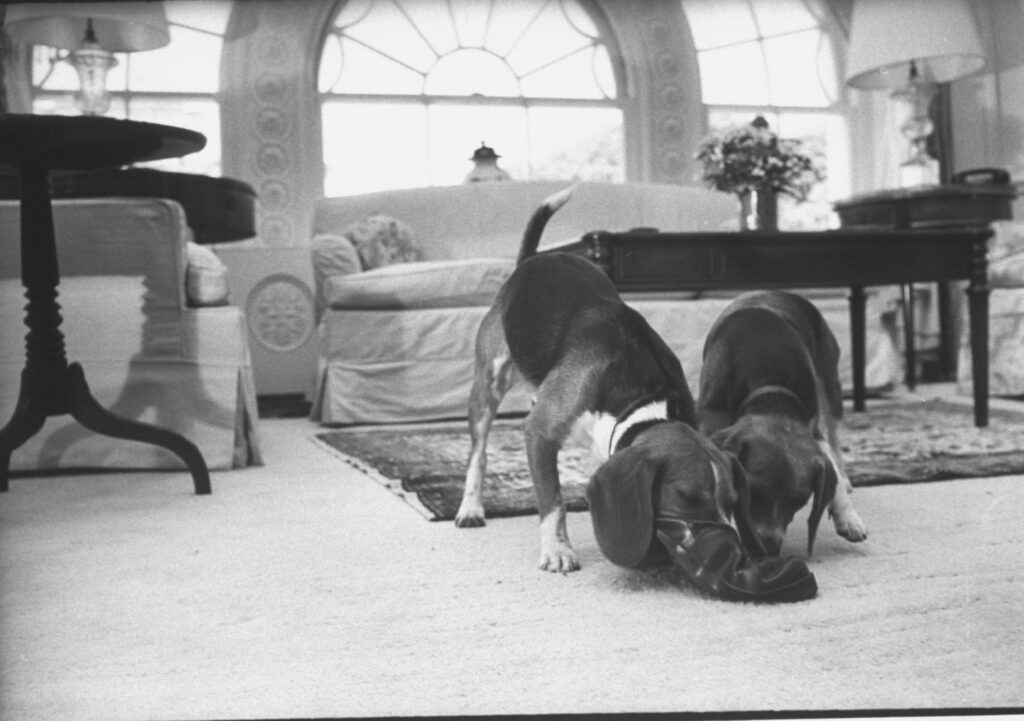
Him and Her, the beagles belonging to the Lyndon B. Johnson family, made sport of an old overshoe in the White House living quarters, 1964.
Francis Miller/Life Picture Collection/Shutterstock
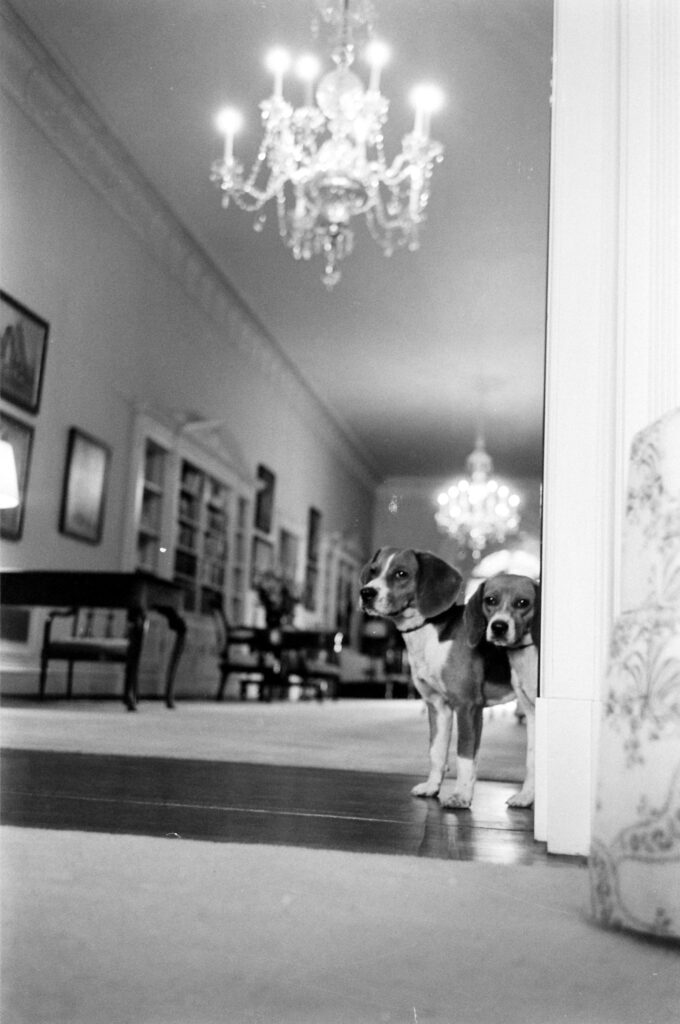
Lyndon Johnson’s beagles, Him and Her, at the White House, 1964.
Francis Miller/Life Picture Collection/Shutterstock
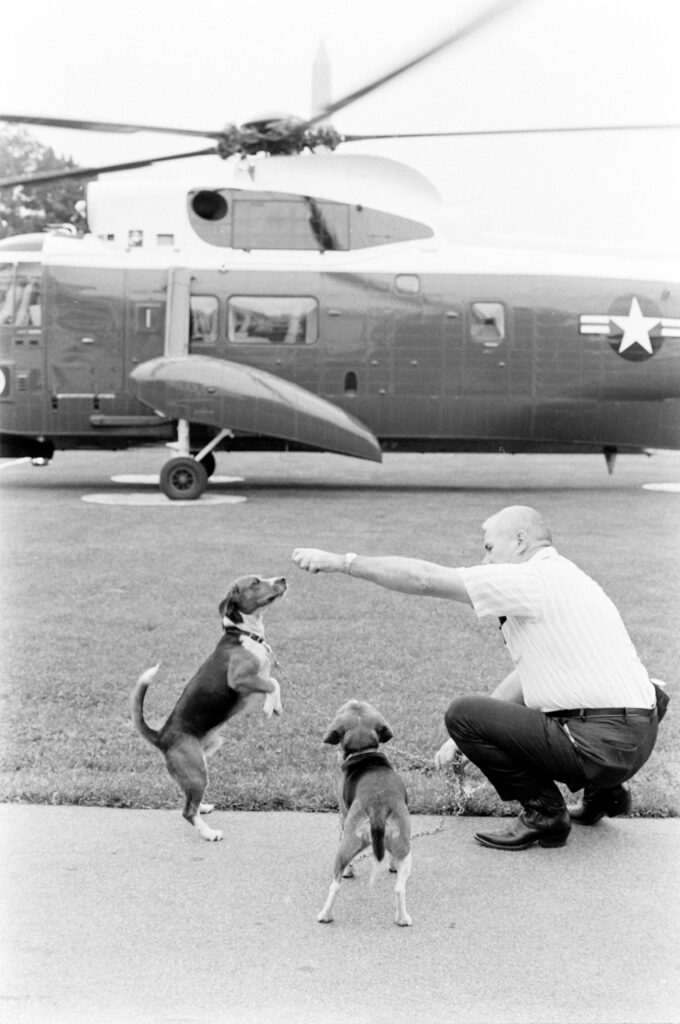
Thraphes Bryant, in addition to being White House electrician, helped care for the beagles of Lyndon B. Johnson, 1964.
Francis Miller/Life Picture Collection/Shutterstock
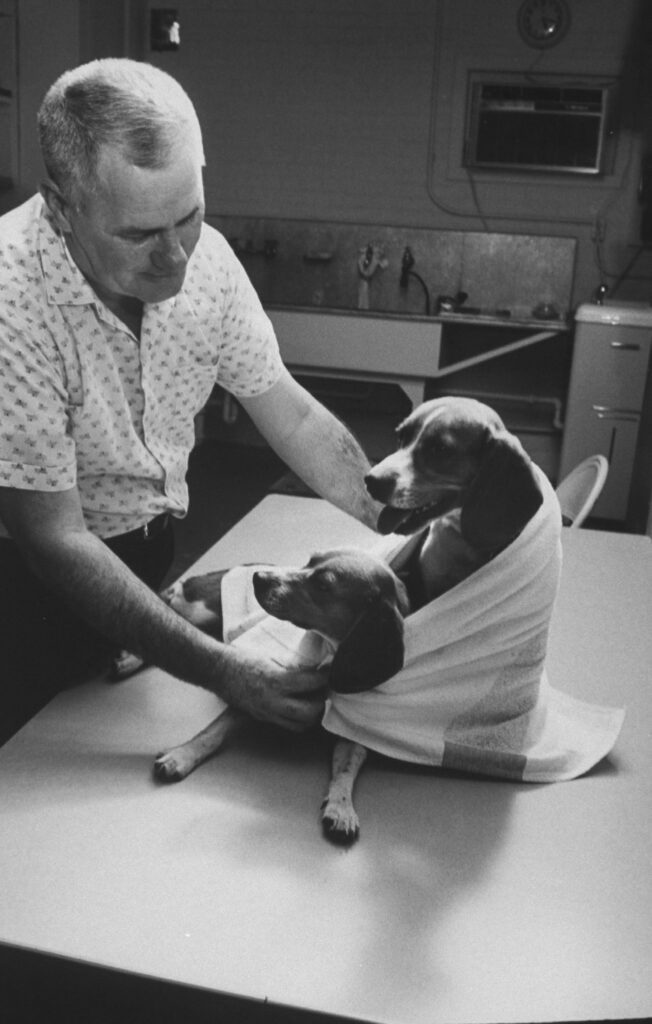
White House electrician Thraphes Bryant helped care for LBJ’s beagles, 1964.
Francis Miller/Life Picture Collection/Shutterstock

Thraphes Bryant, in addition to being White House electrician, helped care for the beagles of Lyndon B. Johnson, 1964.
Francis Miller/Life Picture Collection/Shutterstock
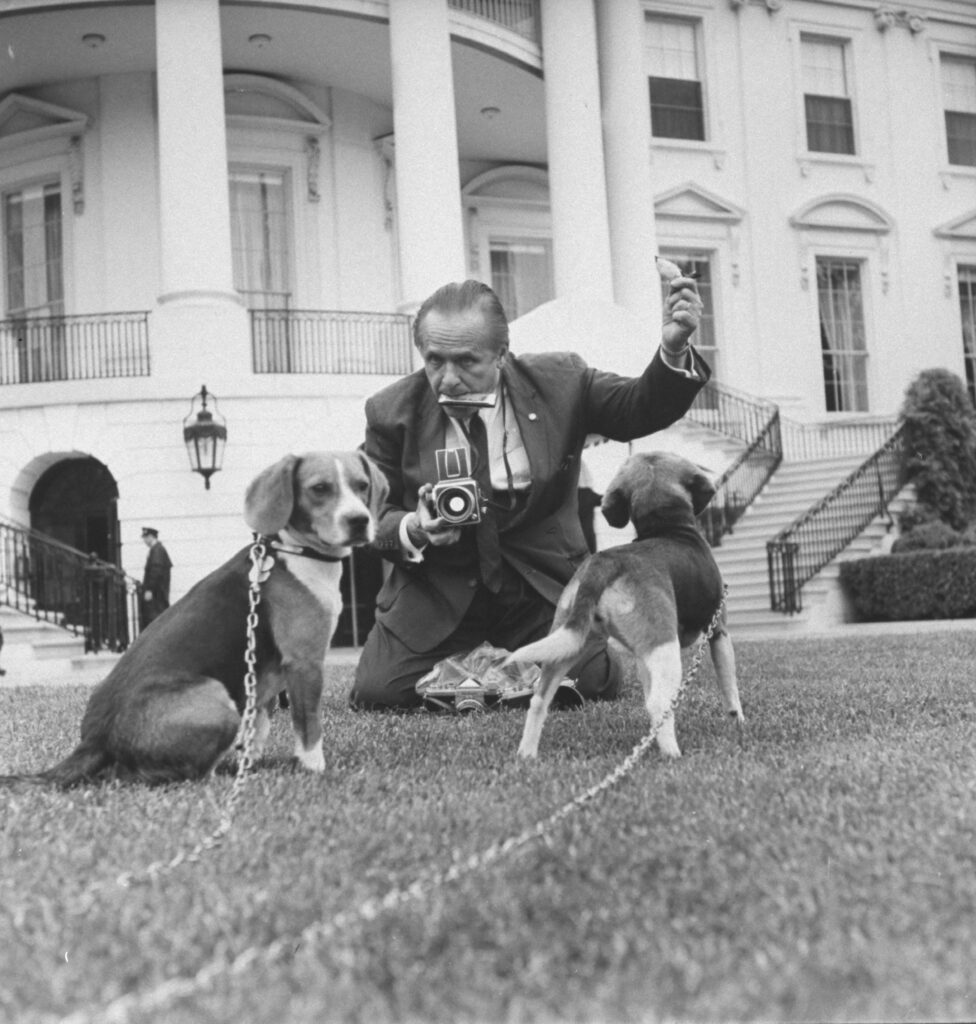
LIFE photographer Francis Miller took photos of President Lyndon B. Johnson’s beagles, Him and Her, on the White House lawn, 1964.
Francis Miller/Life Picture Collection/Shutterstock
The post The First Beagles Whose Ears LBJ Just Had to Tug appeared first on LIFE.

As the festive season approaches or a special occasion calls for celebration, finding the perfect gifts for teens can be both exciting and challenging. In…
The post 12 Gifts for Teenage Girls this Christmas appeared first on The Daily Struggle.

There’s a certain kind of magic in books; they transport us to far-off realms, teach us profound truths, and become dear companions in quiet moments.…
The post 29 gifts for book lovers (that aren’t just books) appeared first on The Daily Struggle.
4 Nov, 2024 | Admin | No Comments
Savvy ways to stay warm at home without paying more for heating bills


With the colder weather creeping in and the cost of energy bills rising, we’ve taken a look at the best ways to keep yourself warm…
The post Savvy ways to stay warm at home without paying more for heating bills appeared first on The Daily Struggle.
1 Nov, 2024 | Admin | No Comments
12 best non chocolate advent calendar gifts – count down to the big day in style!


Get ready to kick off the festive season in style with ultimate list of the best non chocolate advent calendar gifts for 2024! Tired of…
The post 12 best non chocolate advent calendar gifts – count down to the big day in style! appeared first on The Daily Struggle.